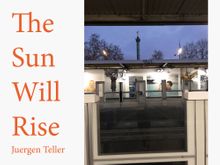| ||||||||||||||||||||||||||||||||||||||||
PHOTOGRAPHY MONOGRAPHS
|
|
STATUS: Forthcoming | 2/3/2026 This title is not yet published in the U.S. To pre-order or receive notice when the book is available, please email orders @ artbook.com |
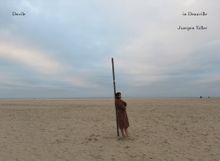 Juergen Teller: Dovile in Deauville
Juergen Teller: Dovile in Deauville
Published by Steidl.
As soon as Juergen Teller (born 1964) had the idea, he knew it was a good one: Dovile in Deauville. At the beginning of January 2024, following his largest exhibition to date, i need to live at the Grand Palais Éphémère in Paris, Teller and his wife and creative partner, Dovile Drizyte (born 1982), headed to Deauville in Normandy: a coveted destination for the rich and famous since the 19th century, home to grand hotels, horse racing, a palace of a casino and the American Film Festival. Yet when the couple arrived in the middle of a gray winter, a different and altogether less glamorous picture of Deauville presented itself. This book is a visual memoir of their time together, an unconventional portrait of both Dovile and Deauville showing Teller’s ability to find beauty in the expected and humor and mystery in the mundane.
Juergen Teller was born in Erlangen, Germany, in 1964. His work has been published in influential magazines such as Vogue, i-D and Arena Homme+, and has been the subject of solo exhibitions, including those at the Institute of Contemporary Arts in London, the Fondation Cartier pour l’art contemporain in Paris and Martin-Gropius-Bau in Berlin. Teller won the prestigious Citibank Photography Prize in 2003, and from 2014 to 2019 held a professorship at the Akademie der Bildenden Künste Nürnberg.
PUBLISHER
Steidl
BOOK FORMAT
Hardcover, 8.75 x 6.5 in. / 128 pgs / 95 color.
PUBLISHING STATUS
Pub Date 2/3/2026
Forthcoming
DISTRIBUTION
D.A.P. Exclusive
Catalog: FALL 2024 p. 152
PRODUCT DETAILS
ISBN 9783969993804 TRADE
List Price: $40.00 CAD $58.00
AVAILABILITY
Awaiting stock
STATUS: Forthcoming | 2/3/2026 This title is not yet published in the U.S. To pre-order or receive notice when the book is available, please email orders @ artbook.com |
 Juergen Teller: Auschwitz Birkenau
Juergen Teller: Auschwitz Birkenau
Published by Steidl.
Text by Christoph Heubner.
Published with International Auschwitz Committee, Berlin.
Shortly before the 80th anniversary of the liberation of the Nazi concentration and extermination camp Auschwitz-Birkenau, German photographer Juergen Teller (born 1964) traveled there with others. They spent days walking through the memorial sites, and Teller photographed what he saw: barracks, gas chambers and latrines, electric fences, drawings, photos and messages documenting the lives of the prisoners and their deaths—but also mundane things such as parking signs and souvenir stores, visitors and buses. Everything in these images has lost its innocence, even the grass and winter sunlight streaming through windows. Each detail captured by Teller is a trace of the world of the victims and their perpetrators, part of the horror of this 190-hectare death factory in which more than 1.1 million people, most of them Jews, were murdered. Teller's photographs preserve what is there, past and present.
PUBLISHER
Steidl
BOOK FORMAT
Paperback, 7.5 x 10.25 in. / 448 pgs / 820 color.
PUBLISHING STATUS
Pub Date 7/1/2025
Active
DISTRIBUTION
D.A.P. Exclusive
Catalog: FALL 2025 p. 130
PRODUCT DETAILS
ISBN 9783969994597 TRADE
List Price: $40.00 CAD $55.00
AVAILABILITY
In stock
in stock $40.00 Free Shipping UPS GROUND IN THE CONTINENTAL U.S. |
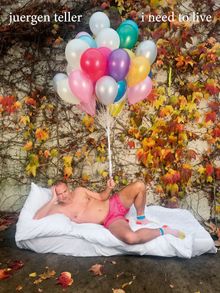 Juergen Teller: I Need to Live
Juergen Teller: I Need to Live
Published by Steidl.
Text by Tom Emerson, Roni Horn, Rick Owens, Leïla Slimani, Thomas Weski, et al.
Throughout his 35-year career, the German photographer Juergen Teller (born 1964) has been renowned for his non-conformist style, defying expectations with a unique combination of seriousness and self-irony, creating authentic narratives from his insatiable curiosity for life and the endlessly surprising world around him. I Need to Live, accompanying Teller’s major solo exhibition at the Grand Palais Éphémère, Paris, in 2023–24 and the Triennale Milano in 2024, captures the depth of his unmatched photographic achievement.
In this catalog, Teller reflects upon the unpredictable circle of life, imbuing his images of loved ones with newfound poignancy. Those he has lost—collaborators and friends such as fashion designer Vivienne Westwood and gallerist Suzanne Tarasieve—share visual space with his wife and muse, Dovile Drizyte. Contributions from artists and designers Roni Horn and Rick Owens, among others, meditate upon Teller’s most intimate photo collection yet.
PUBLISHER
Steidl
BOOK FORMAT
Paperback, 6.25 x 9.5 in. / 272 pgs / 700 color.
PUBLISHING STATUS
Pub Date 6/25/2024
Active
DISTRIBUTION
D.A.P. Exclusive
Catalog: SPRING 2024 p. 34
PRODUCT DETAILS
ISBN 9783969992913 TRADE
List Price: $45.00 CAD $65.00
AVAILABILITY
Out of stock
STATUS: Out of stock Temporarily out of stock pending additional inventory. |
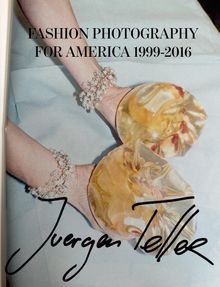 Juergen Teller: Fashion Photography for America 1999–2016
Juergen Teller: Fashion Photography for America 1999–2016
Published by Steidl.
Text by Juergen Teller.
German photographer Juergen Teller (born 1964) has long collaborated with Dennis Freedman, creative director for W magazine and the luxury department store Barneys in New York. Between 1999 and 2016, the pair created a sweep of iconic series, all captured in Teller’s trademark realistic style. In his photographs for W, Teller resisted large-budget shoots and instead sought out authentic, anti-commercial narratives in subtle locations: as in his unforgettable first editorial in 1999 which featured Stephanie Seymour, Shalom Harlow and Naomi Campbell (among other supermodels) as office workers at the magazine.
Teller and Freedman’s work for Barneys catalogs between 2011 and 2016 epitomizes their risk-taking approach in unusual fashion locations such as Belgrade, Panama City and Tirana. The resulting images reveal kooky contrasts and unexpected scenarios, as models and actors explore their environments in comic poses, producing a kind of nonconformist advertising.
For Fashion Photography for America 1999–2016, Teller photographed the original W magazines and Barneys catalogs from his archives, a lo-fi method that projects the reader into his physical sifting process.
PUBLISHER
Steidl
BOOK FORMAT
Hardcover, 8 x 10.5 in. / 256 pgs / 225 color.
PUBLISHING STATUS
Pub Date 3/26/2024
Active
DISTRIBUTION
D.A.P. Exclusive
Catalog: SPRING 2024 p. 12
PRODUCT DETAILS
ISBN 9783969992951 TRADE
List Price: $50.00 CAD $72.00
AVAILABILITY
Out of stock
STATUS: Out of stock Temporarily out of stock pending additional inventory. |
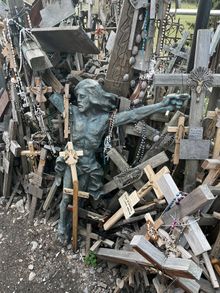 Juergen Teller: Jurgaiciai
Juergen Teller: Jurgaiciai
Published by Steidl.
Text by Juergen Teller.
This latest photo essay by Juergen Teller (born 1964) details his visit to the compelling Hill of Crosses with his wife Dovile Drizyte and her parents in 2022. A pilgrimage and tourist site near Šiauliai, Lithuania, the Hill originated as a place of commemoration after the November Uprising of 1830–31. With his ever-curious eye, Teller captures the intense spirituality of this sacred destination. Responding to over 100,000 crucifixes within just one acre, his images embody this tangled web of religious iconography, from stone sculptures of Jesus draped in rosary beads to wooden effigies. The series takes on a deeper personal significance in the context of the recent passing of two of Teller’s most esteemed collaborators: designer Vivienne Westwood and gallerist Suzanne Tarasieve. He embeds portraits of these powerful women into his collection of symbolic images: a compelling tribute to two personalities who continue to inspire his work.
PUBLISHER
Steidl
BOOK FORMAT
Clth, 9 x 11.75 in. / 80 pgs / 74 color.
PUBLISHING STATUS
Pub Date 3/26/2024
Active
DISTRIBUTION
D.A.P. Exclusive
Catalog: SPRING 2024 p. 34
PRODUCT DETAILS
ISBN 9783969992920 TRADE
List Price: $25.00 CAD $37.50
AVAILABILITY
In stock
in stock $25.00 Free Shipping UPS GROUND IN THE CONTINENTAL U.S. |
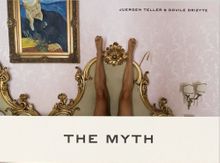 Juergen Teller: The Myth
Juergen Teller: The Myth
Published by Steidl.
A collaboration with his wife Dovile Drizyte, The Myth is Juergen Teller’s (born 1964) playful interpretation of the “legs up” fertility myth. Following the humorous 2021 series We are Building our Future Together, in which the Tellers dressed up as construction workers on building sites, this project reflects the next stage of their relationship as they start a family together. The enchanting location is the Grand Hotel Villa Serbelloni, a hotel brimming with art alluding to motherhood and the family unit; the paintings and sculptures of pregnancy, babies, storks and cherubs figure as cheeky good luck charms for their child’s imminent birth. The Tellers created images in each of the hotel’s 97 unique rooms—in some we see the whole of Drizyte’s naked body, while in others her cropped legs or feet appear unexpectedly, peeking behind duvets, curtains and furniture, generating tender, playful juxtapositions.
PUBLISHER
Steidl
BOOK FORMAT
Hardcover, 9 x 6.5 in. / 192 pgs / 184 color.
PUBLISHING STATUS
Pub Date 4/23/2024
Active
DISTRIBUTION
D.A.P. Exclusive
Catalog: SPRING 2024 p. 34
PRODUCT DETAILS
ISBN 9783969992944 TRADE
List Price: $40.00 CAD $58.00
AVAILABILITY
In stock
in stock $40.00 Free Shipping UPS GROUND IN THE CONTINENTAL U.S. |
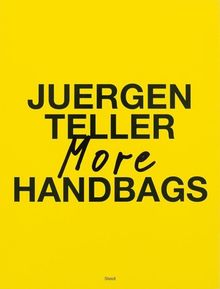 Juergen Teller: More Handbags
Juergen Teller: More Handbags
Published by Steidl.
Text by Juergen Teller.
This revised and expanded edition of Juergen Teller’s (born 1964) bestselling Handbags features a considered selection of images from the original 2019 book, alongside his favorite photographs made since. As before, Teller’s advertising campaigns for distinguished brands such as Coach, Dolce & Gabbana, Loewe, Saint Laurent and Vivienne Westwood are shown with images of handbags deftly styled for fashion editorials—all worn by celebrities and models or photographed as still-life objects. Teller acknowledges the visible shift toward celebrity endorsement in recent years, which has led to exciting new encounters with a multitude of actors, musicians, artists, writers and filmmakers.
In his unmistakable subversive, raw style, Teller presents the ultimate fashion accessory as an everyday item rather than as a glamorized commodity, often in surprising contexts (a handbag perched atop supermarket vegetables) or with humorous intent (a bag sitting on a taxidermy crocodile). This time around, More Handbags has the compact size of a handbag itself, making it more accessible and tactile.
PUBLISHER
Steidl
BOOK FORMAT
Hardcover, 7 x 9.25 in. / 384 pgs / 450 color.
PUBLISHING STATUS
Pub Date 3/26/2024
Active
DISTRIBUTION
D.A.P. Exclusive
Catalog: SPRING 2024 p. 12
PRODUCT DETAILS
ISBN 9783969992906 TRADE
List Price: $65.00 CAD $95.00
AVAILABILITY
In stock
in stock $65.00 Free Shipping UPS GROUND IN THE CONTINENTAL U.S. |
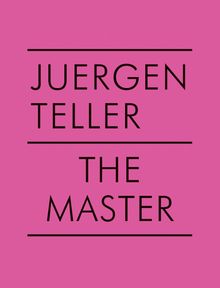 Juergen Teller: The Master V
Juergen Teller: The Master V
Published by Steidl.
This is the newest book in Juergen Teller’s (born 1964) original and beloved Masters series. Teller made his first Master in 2005 as an homage to anything and everything he believes is a master—rock icon Iggy Pop, actor Gillian Anderson, football manager Carlo Ancelotti or even a simple vase of flowers—as well as a tongue-in-cheek recognition of himself as the master of his photographic identity. The concept was simple: to create an ongoing collection of humble books, each at the same small size, with no text and minimal design.
Like past volumes in the series, The Master V presents an unpredictable mix of Teller’s eclectic photography: unorthodox fashion work, still lifes, landscapes, portraits or images that move between these genres. Featured subjects include chess grand master Garry Kasparov, editor-in-chief of British Vogue Edward Enninful and fashion designer Demna Gvasalia.
PUBLISHER
Steidl
BOOK FORMAT
Paperback, 7 x 9 in. / 48 pgs / 34 color.
PUBLISHING STATUS
Pub Date 4/18/2023
Active
DISTRIBUTION
D.A.P. Exclusive
Catalog: SPRING 2023 p. 91
PRODUCT DETAILS
ISBN 9783969991343 TRADE
List Price: $25.00 CAD $35.00
AVAILABILITY
In stock
in stock $25.00 Free Shipping UPS GROUND IN THE CONTINENTAL U.S. |
 Juergen Teller: Notes about My Work
Juergen Teller: Notes about My Work
Published by Steidl.
“I never really think of anyone as models, even the models,” Juergen Teller (born 1964) has said. It was with these beliefs in mind that Teller approached his photographs for the 2021 Best Performances issue of W magazine. Notes about My Work is Teller’s response to the feedback on this controversial portfolio.
Best Performances is an annual issue of W, showcasing movie stars. In Los Angeles Teller photographed 28 actors, from Michelle Pfeiffer and George Clooney to Steven Yeun and Otmara Marrero, all posing with cars. W was delighted with the result, yet online reactions were mixed. Teller was praised as “a perfect choice” for his “aversion to excess glamour,” but also subject to much misinterpretion of his tone and methods. This book presents Teller’s selection of screenshots of some of these “notes about his work”—a mirror onto social media.
PUBLISHER
Steidl
BOOK FORMAT
Paperback, 9 x 11.75 in. / 48 pgs / 74 color.
PUBLISHING STATUS
Pub Date 5/30/2023
Active
DISTRIBUTION
D.A.P. Exclusive
Catalog: SPRING 2023 p. 24
PRODUCT DETAILS
ISBN 9783969991350 TRADE
List Price: $25.00 CAD $34.00
AVAILABILITY
In stock
in stock $25.00 Free Shipping UPS GROUND IN THE CONTINENTAL U.S. |
 The Tellers: Auguri
The Tellers: Auguri
Published by Steidl.
“We are building our future together,” declared Juergen Teller (born 1964) and Dovile Drizyte on their wedding invitation, the words handwritten on a photo of the couple wearing safety hats and jackets as they strike a pose on a construction site. This set the celebratory, irreverent tone for their wedding in Naples, an occasion they ensured was an unforgettable, multiday experience for their guests.
Auguri is Teller and Drizyte’s uninhibited visual diary of their wedding adventure, from the ceremony to the formal dinner—where each lucky guest received an unexpected gift from the bride and groom, a ceramic plate signed and printed with a different motif from the We are building our future together series—and the night’s undeniable highlight: a delightfully dirty performance by subversive drag queen Christeene and her band.
PUBLISHER
Steidl
BOOK FORMAT
Hardcover, 6.5 x 8.25 in. / 288 pgs / 274 color.
PUBLISHING STATUS
Pub Date 10/4/2022
Active
DISTRIBUTION
D.A.P. Exclusive
Catalog: SPRING 2023 p. 24
PRODUCT DETAILS
ISBN 9783969990933 TRADE
List Price: $45.00 CAD $62.00
AVAILABILITY
In stock
in stock $45.00 Free Shipping UPS GROUND IN THE CONTINENTAL U.S. |
 Nobuyoshi Araki & Juergen Teller: Leben und Tod
Nobuyoshi Araki & Juergen Teller: Leben und Tod
Published by Steidl.
Text by Juergen Teller.
The latest collaboration between these two seminal photographers, Leben und Tod is the culmination of their joint exhibition at artspace AM, Tokyo, in 2019. This intensely personal project concentrates on Juergen Teller’s (born 1964) series Leben und Tod (Life and Death), which reflects upon the death of his uncle and stepfather Artur, juxtaposing photographs of his mother and homeland in Bubenreuth, Bavaria, with symbolic images of fertility and life on holiday in Bhutan with his partner Dovile Drizyte.
Inspired by this series, Nobuyoshi Araki (born 1940) asked to photograph Teller’s “childhood memory objects,” items of particular emotional significance to him and his parents. Teller eagerly collected such personal gems, among them toys, a porcelain figurine and bridges made in the family’s violin workshop; the resulting images by Araki are haunting yet playful, creating an intriguing narrative alongside the original story.
PUBLISHER
Steidl
BOOK FORMAT
Clth, 10.25 x 7.5 in. / 72 pgs / 67 color.
PUBLISHING STATUS
Pub Date 10/6/2020
Active
DISTRIBUTION
D.A.P. Exclusive
Catalog: FALL 2020 p. 101
PRODUCT DETAILS
ISBN 9783958297456 TRADE
List Price: $45.00 CAD $63.00
AVAILABILITY
In stock
in stock $45.00 Free Shipping UPS GROUND IN THE CONTINENTAL U.S. |
 Juergen Teller: Plumtree Court
Juergen Teller: Plumtree Court
Published by Steidl.
Text by Juergen Teller.
This book traces the five-year construction of Plumtree Court, Goldman Sachs’ new headquarters in Central London, through Juergen Teller’s (born 1964) inimitable vision. Teller relished immersing himself in such a long-term project, one thrillingly different to the fashion world he knows so well. From the rising walls of reinforced concrete and lattices of scaffolding, to the sparkling glass facades and gleaming interiors of the finished building, Teller became obsessed with recording intricate details within the larger shifting context: “I liked the diggers, cranes, cables, concrete and dirt. Not in a macho or childish way, but appreciating how all this construction work produces such a beautiful mess.”
His juxtaposition of final photos and collages throughout the book—seen here for the first time in his work—embodies the contrasts between past and present, order and chaos, architectural forms and the surrounding cityscape.
PUBLISHER
Steidl
BOOK FORMAT
Clth, 9.75 x 13 in. / 256 pgs / 412 color.
PUBLISHING STATUS
Pub Date 9/15/2020
Active
DISTRIBUTION
D.A.P. Exclusive
Catalog: FALL 2020 p. 101
PRODUCT DETAILS
ISBN 9783958297449 TRADE
List Price: $45.00 CAD $63.00
AVAILABILITY
In stock
in stock $45.00 Free Shipping UPS GROUND IN THE CONTINENTAL U.S. |
 Harmony Korine & Juergen Teller: William Eggleston 414
Harmony Korine & Juergen Teller: William Eggleston 414
Published by Steidl.
Text by Harmony Korine, Juergen Teller.
This clothbound volume is Harmony Korine (born 1973) and Juergen Teller’s (born 1964) visual memoir of a road trip they took ten years ago with William Eggleston (born 1939) and his son, Winston, from Memphis to Mississippi. Featuring photos and short introductions by Korine and Teller, this record of their spontaneous, intimate journey captures their love for each other through the shared experience of the American road, and combines images of gas stations, abandoned trucks, evangelical households, banal landscapes and hotel rooms with candid portraits. Certain photos cleverly re-visit Eggleston’s own famous motifs—strings of colored electric lights, road signs, people in cars—and yet the star of the show is without doubt Eggleston himself, always impeccably groomed, whether seated at the kitchen table, holding the hand of cousin Maude Schuyler Clay, or playing the grand piano.
PUBLISHER
Steidl
BOOK FORMAT
Clth, 11.25 x 8.25 in. / 144 pgs / 121 color.
PUBLISHING STATUS
Pub Date 10/6/2020
Out of stock indefinitely
DISTRIBUTION
D.A.P. Exclusive
Catalog: FALL 2020 p. 101
PRODUCT DETAILS
ISBN 9783958297630 TRADE
List Price: $45.00 CAD $63.00
AVAILABILITY
Not available
STATUS: Out of stock indefinitely. |
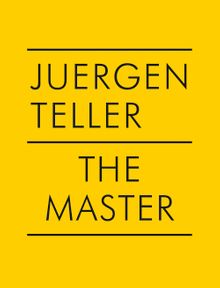 Juergen Teller: The Master IV
Juergen Teller: The Master IV
Nobuyoshi Araki, William Eggleston, Boris Mikhailov, Charlotte Rampling
Published by Steidl.
This season sees the release of the newest book in Juergen Teller’s (born 1964) original and beloved Masters series. Teller made his first Master in 2005 as an homage to everything he believes is a master or masterful—be it a chef like Fergus Henderson, an artist like David Hamilton, his own grandmother, Kurt Cobain, or a landscape—as well as a tongue-in-cheek recognition of himself as a master of his own photographic identity. The concept was simple: to produce an ongoing series of humble books, each at the same small size, with no text and as little design as possible—an antithesis to the standard coffee-table book.
Like past volumes in the series, The Master IV features an unpredictable mix of Teller’s eclectic photography. These books are dedicated to four of Teller’s most important masters who have influenced both his work and outlook on life—Nobuyoshi Araki, William Eggleston, Boris Mikhailov and Charlotte Rampling—and feature new portraits of them.
PUBLISHER
Steidl
BOOK FORMAT
Paperback, 7 x 9 in. / 48 pgs / 48 color.
PUBLISHING STATUS
Pub Date 4/23/2019
Out of stock indefinitely
DISTRIBUTION
D.A.P. Exclusive
Catalog: SPRING 2019 p. 156
PRODUCT DETAILS
ISBN 9783958295759 TRADE
List Price: $20.00 CAD $62.00
AVAILABILITY
Not available
STATUS: Out of stock indefinitely. |
 Elisabeth von Samsonow & Juergen Teller: The Parents’ Bedroom Show (Creating Time)
Elisabeth von Samsonow & Juergen Teller: The Parents’ Bedroom Show (Creating Time)
Published by Verlag für moderne Kunst.
Text by Christian Bauer, Domenico Fallacara, Elisabeth von Samsonow, Nina Tabassomi, Felicitas Thun-Hohenstein. Conversation with Elisabeth von Samsonow, Juergen Teller.
This catalog documents the performance project The Parents' Bedroom Show by Austrian artist and philosopher Elisabeth von Samsonow (born 1956), which was captured in 62 photographs by Juergen Teller.
PUBLISHER
Verlag für moderne Kunst
BOOK FORMAT
Paperback, 8 x 6 in. / 200 pgs / 120 color.
PUBLISHING STATUS
Pub Date 11/26/2019
Active
DISTRIBUTION
D.A.P. Exclusive
Catalog: SPRING 2020
PRODUCT DETAILS
ISBN 9783903269804 FLAT40
List Price: $39.95 CAD $55.00
AVAILABILITY
Out of stock
STATUS: Out of stock Temporarily out of stock pending additional inventory. |
 Francesco Bonami & Juergen Teller: 50 Times Bonami and Obrist by Teller
Francesco Bonami & Juergen Teller: 50 Times Bonami and Obrist by Teller
Published by Steidl.
Interview by Ewa Hess with Francesco Bonami.
On the occasion of Hans Ulrich Obrist's 50th birthday in 2018, Swiss gallery 107 S-chanf asked fellow curator Francesco Bonami to create a celebratory exhibition. Bonami's initial idea was to invite 50 artists to create 50 portraits of Obrist in an ambitious collaborative homage. Yet the idea proved a little too ambitious, and Bonami decided to create the portraits all by himself. Within just two weeks 50 oil paintings were ready—endearing and humorous works, many of which incorporate artists of the past and present, including Edward Hopper, Ai Weiwei and Georg Baselitz.
In January 2019 Juergen Teller was invited to view the exhibition 50 Times Obrist by Bonami, and with characteristic spontaneity he photographed Bonami and Obrist before each portrait. This resulting book, with Teller's photos on the left-hand pages and Bonami's paintings on the right, is an unconventional, tongue-in-cheek portrait of a portrait.
PUBLISHER
Steidl
BOOK FORMAT
Paperback, 9 x 11.75 in. / 112 pgs / 102 color.
PUBLISHING STATUS
Pub Date 12/10/2019
Active
DISTRIBUTION
D.A.P. Exclusive
Catalog: SPRING 2020
PRODUCT DETAILS
ISBN 9783958296435 TRADE
List Price: $40.00 CAD $55.00
AVAILABILITY
In stock
in stock $40.00 Free Shipping UPS GROUND IN THE CONTINENTAL U.S. |
 Juergen Teller: Handbags
Juergen Teller: Handbags
Published by Steidl.
“Friends of my girlfriend were asking me what kind of a photographer I am, what I photograph,” Juergen Teller says, apropos of his latest book. “I replied: ‘Actually, come to think of it, mostly handbags.’ I always like their astonished and disappointed faces! I realized through the 30 years of my career, I photographed a hell of a lot of handbags within my fashion work.”
This enormous 600-page book of photographs of handbags depicts the accessory as you might imagine it through the lens of Teller, colorful and well lit, but nonetheless as you have never seen handbags before. Numerous models, actors and infamous individuals are featured here, including Michael Clark, Cindy Sherman, Kate Moss, Vivienne Westwood, Sofia Coppola, Tilda Swinton, John Malkovich and Victoria Beckham. Teller himself sees the book as akin to his 1999 volume Go-Sees, in its direct serial character.
Demonstrating how Teller has reshaped the field of fashion photography since he first emerged in the 1990s, Handbags will delight the aficionado of contemporary fashion and of photography alike.
Juergen Teller was born in Erlangen, Germany, in 1964. His work has been published in influential magazines such as Vogue, System, i-D, POP and Arena Homme+, and has been the subject of solo exhibitions, including those at the Institute of Contemporary Arts in London, the Fondation Cartier pour l’art contemporain in Paris and Martin-Gropius-Bau in Berlin. Teller won the prestigious Citibank Photography Prize in 2003, and from 2014 to 2019 held a professorship at the Akademie der Bildenden Künste Nürnberg. His books with Steidl include Louis XV (2005), Marc Jacobs Advertising, 1998–2009 (2009), Siegerflieger (2015) and The Master IV (2019).
PUBLISHER
Steidl
BOOK FORMAT
Clth, 9.5 x 12 in. / 608 pgs / 600 color.
PUBLISHING STATUS
Pub Date 7/23/2019
Active
DISTRIBUTION
D.A.P. Exclusive
Catalog: FALL 2019 p. 5
PRODUCT DETAILS
ISBN 9783958296343 TRADE
List Price: $125.00 CAD $170.00
AVAILABILITY
In stock
in stock $125.00 Free Shipping UPS GROUND IN THE CONTINENTAL U.S. |
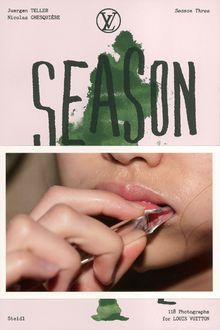 Juergen Teller and Nicolas Ghesquière: Season Three
Juergen Teller and Nicolas Ghesquière: Season Three
Published by Steidl.
PUBLISHER
Steidl
BOOK FORMAT
Paperback, 7 x 10.5 in. / 224 pgs / 118 color.
PUBLISHING STATUS
Pub Date 1/26/2016
Out of print
DISTRIBUTION
D.A.P. Exclusive
Catalog: SPRING 2016 p. 105
PRODUCT DETAILS
ISBN 9783958290877 TRADE
List Price: $30.00 CAD $40.00
AVAILABILITY
Not available
STATUS: Out of print | 00/00/00 For assistance locating a copy, please see our list of recommended out of print specialists |
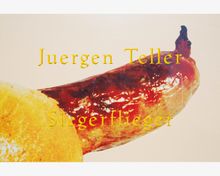 Juergen Teller: Siegerflieger
Juergen Teller: Siegerflieger
Published by Steidl.
Text by Peter Miles.
PUBLISHER
Steidl
BOOK FORMAT
Paperback, 10.5 x 8.5 in. / 400 pgs / 394 color.
PUBLISHING STATUS
Pub Date 5/26/2015
Active
DISTRIBUTION
D.A.P. Exclusive
Catalog: SPRING 2015 p. 121
PRODUCT DETAILS
ISBN 9783869309149 TRADE
List Price: $65.00 CAD $87.00
AVAILABILITY
In stock
in stock $65.00 Free Shipping UPS GROUND IN THE CONTINENTAL U.S. |
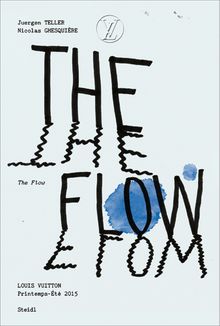 Juergen Teller & Nicolas Ghesquiére: The Flow
Juergen Teller & Nicolas Ghesquiére: The Flow
Louis Vuitton, Spring–Summer 2015
Published by Steidl.
PUBLISHER
Steidl
BOOK FORMAT
Paperback, 8 x 11 in. / 96 pgs / 70 color.
PUBLISHING STATUS
Pub Date 5/26/2015
Out of print
DISTRIBUTION
D.A.P. Exclusive
Catalog: SPRING 2015 p. 121
PRODUCT DETAILS
ISBN 9783869309361 TRADE
List Price: $29.95 CAD $39.95
AVAILABILITY
Not available
STATUS: Out of print | 00/00/00 For assistance locating a copy, please see our list of recommended out of print specialists |
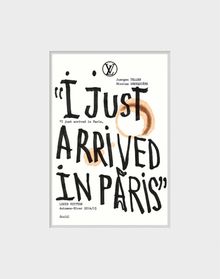 Juergen Teller & Nicolas Ghesquière: I Just Arrived in Paris
Juergen Teller & Nicolas Ghesquière: I Just Arrived in Paris
Published by Steidl.
Interview with Juergen Teller and Nicolas Ghesquière by Sylvia Jorif.
PUBLISHER
Steidl
BOOK FORMAT
Boxed, 10.25 x 13 in. / 48 pgs / illustrated throughout.
PUBLISHING STATUS
Pub Date 11/30/2014
Out of print
DISTRIBUTION
D.A.P. Exclusive
Catalog: FALL 2014 p. 12
PRODUCT DETAILS
ISBN 9783869308234 TRADE
List Price: $125.00 CAD $170.00
AVAILABILITY
Not available
STATUS: Out of print | 00/00/00 For assistance locating a copy, please see our list of recommended out of print specialists |
 Juergen Teller: Woo!
Juergen Teller: Woo!
Published by Steidl.
PUBLISHER
Steidl
BOOK FORMAT
Hardcover, 10 x 13 in. / 336 pgs / illustrated throughout.
PUBLISHING STATUS
Pub Date 8/15/2013
Out of print
DISTRIBUTION
D.A.P. Exclusive
Catalog: FALL 2014 p. 17
PRODUCT DETAILS
ISBN 9783869306520 TRADE
List Price: $60.00 CAD $79.00
AVAILABILITY
Not available
STATUS: Out of print | 00/00/00 For assistance locating a copy, please see our list of recommended out of print specialists |
 Juergen Teller: The Keys to the House
Juergen Teller: The Keys to the House
Published by Steidl.
PUBLISHER
Steidl
BOOK FORMAT
Paperback, 9.5 x 11.75 in. / 128 pgs / illustrated throughout.
PUBLISHING STATUS
Pub Date 11/15/2012
Active
DISTRIBUTION
D.A.P. Exclusive
Catalog: FALL 2014
PRODUCT DETAILS
ISBN 9783869303833 TRADE
List Price: $60.00 CAD $79.00
AVAILABILITY
In stock
in stock $60.00 Free Shipping UPS GROUND IN THE CONTINENTAL U.S. |
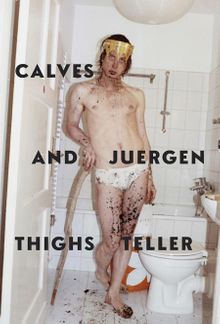 Juergen Teller: Calves & Thighs
Juergen Teller: Calves & Thighs
Published by TF Editores/D.A.P..
Text by Adrian Searle, Paul Wombell, Helmut Teller, Fabrice Paineau, et al.
PUBLISHER
TF Editores/D.A.P.
BOOK FORMAT
Flexi, 6.75 x 9.75 in. / 172 pgs / 98 color.
PUBLISHING STATUS
Pub Date 10/31/2010
Out of print
DISTRIBUTION
D.A.P. Exclusive
Catalog: MID WINTER 2010
PRODUCT DETAILS
ISBN 9781935202325 TRADE
List Price: $30.00 CAD $35.00
AVAILABILITY
Not available
STATUS: Out of print | 00/00/00 For assistance locating a copy, please see our list of recommended out of print specialists |
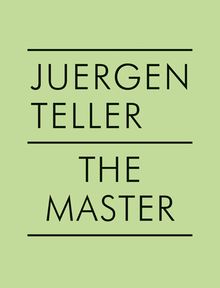 Juergen Teller: The Master II
Juergen Teller: The Master II
Published by Steidl.
PUBLISHER
Steidl
BOOK FORMAT
Paperback, 6.75 x 8.75 in. / 0 pgs / illustrated throughout.
PUBLISHING STATUS
Pub Date 3/9/2010
Out of print
DISTRIBUTION
D.A.P. Exclusive
Catalog: FALL 2014
PRODUCT DETAILS
ISBN 9783869300566 TRADE
List Price: $10.00 CAD $12.50
AVAILABILITY
Not available
STATUS: Out of print | 00/00/00 For assistance locating a copy, please see our list of recommended out of print specialists |
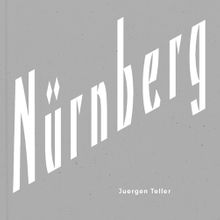 Juergen Teller: Nurnberg
Juergen Teller: Nurnberg
Published by Steidl.
Photographs by Juergen Teller.
PUBLISHER
Steidl
BOOK FORMAT
Clothbound, 13.75 x 11 in. / 120 pgs / 60 color.
PUBLISHING STATUS
Pub Date 6/15/2005
Active
DISTRIBUTION
D.A.P. Exclusive
Catalog: FALL 2005 p. 98
PRODUCT DETAILS
ISBN 9783865211323 TRADE
List Price: $70.00 CAD $92.50
AVAILABILITY
In stock
in stock $70.00 Free Shipping UPS GROUND IN THE CONTINENTAL U.S. |
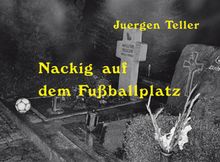 Juergen Teller: Nackig Auf Dem Fussballplatz
Juergen Teller: Nackig Auf Dem Fussballplatz
Published by Steidl.
Photographs by Juergen Teller.
PUBLISHER
Steidl
BOOK FORMAT
Paperback, 10.75 x 8 in. / 184 pgs / 9 color / 1 duotone.
PUBLISHING STATUS
Pub Date 7/2/2004
Active
DISTRIBUTION
D.A.P. Exclusive
Catalog: SPRING 2004
PRODUCT DETAILS
ISBN 9783882439632 TRADE
List Price: $30.00 CAD $40.00
AVAILABILITY
In stock
in stock $30.00 Free Shipping UPS GROUND IN THE CONTINENTAL U.S. |
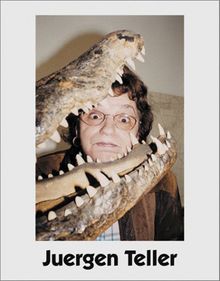 Juergen Teller: Two Porkchops with a Dumpling and One Child's Portion of Schnitzel with Fries
Juergen Teller: Two Porkchops with a Dumpling and One Child's Portion of Schnitzel with Fries
Published by Steidl.
PUBLISHER
Steidl
BOOK FORMAT
Hardcover, 8.25 x 10.5 in. / 76 pgs / 36 color / 11 duotone.
PUBLISHING STATUS
Pub Date 7/2/2003
Active
DISTRIBUTION
D.A.P. Exclusive
Catalog: FALL 2014
PRODUCT DETAILS
ISBN 9783869309330 TRADE
List Price: $45.00 CAD $60.00
AVAILABILITY
In stock
in stock $45.00 Free Shipping UPS GROUND IN THE CONTINENTAL U.S. |
 Juergen Teller
Juergen Teller
Märchenstüberl
Published by Steidl.
Artwork by Tracey Emin. Photographs by Juergen Teller. Edited by Ute Eskildsen. Text by Ulrich Pohlmann, Ulf Poschardt, Neville Wakefield.
PUBLISHER
Steidl
BOOK FORMAT
Hardcover, 10.5 x 8.25 in. / 144 pgs / 62 color / 9 duotone.
PUBLISHING STATUS
Pub Date 6/2/2003
Out of print
DISTRIBUTION
D.A.P. Exclusive
Catalog: SPRING 2003
PRODUCT DETAILS
ISBN 9783882438635 TRADE
List Price: $45.00 CAD $55.00
AVAILABILITY
Not available
STATUS: Out of print | 00/00/00 For assistance locating a copy, please see our list of recommended out of print specialists |
Juergen Teller: Marchenstuberl
Published by Steidl.
PUBLISHER
Steidl
PUBLISHING STATUS
Pub Date 6/30/2002
Active
DISTRIBUTION
D.A.P. Exclusive
Catalog: FALL 2014
PRODUCT DETAILS
ISBN 9783882438536 TRADE
List Price: $30.00 CAD $40.00
AVAILABILITY
Out of stock
STATUS: Out of stock Temporarily out of stock pending additional inventory. |
